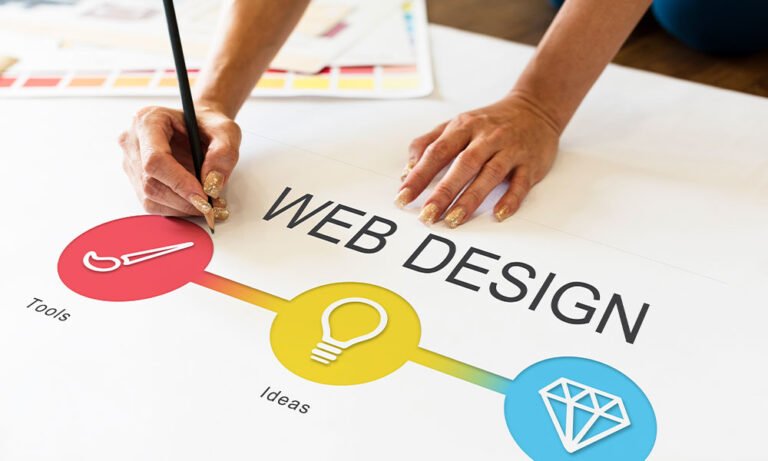Web design is an ever-evolving field, with new trends and techniques constantly emerging. Staying updated with the latest web design trends is crucial to create visually appealing and engaging websites. In this article, we will explore some of the current web design trends that are shaping the digital landscape.
Table of Contents
- Introduction to Web Design Trends
- Minimalism and Simplified Layouts
- Bold and Vibrant Colors
- Dark Mode
- Abstract and Geometric Shapes
- Custom Illustrations and Graphics
- Microinteractions and Animated Elements
- Responsive Design and Mobile-First Approach
- Asymmetrical Layouts and Broken Grids
- Typography and Creative Font Pairings
- Accessibility in Web Design
- Conclusion
- FAQs
1. Introduction to Web Design Trends
Web design trends refer to the popular styles, techniques, and aesthetics that dominate the web design industry at a given time. Following these trends allows designers to create modern and visually appealing websites that resonate with the target audience.
2. Minimalism and Simplified Layouts
Minimalism continues to be a dominant trend in web design. It emphasizes clean, uncluttered layouts, ample white space, and a focus on essential elements. Minimalistic designs not only look visually appealing but also improve user experience by reducing distractions and allowing for easy navigation.
3. Bold and Vibrant Colors
Web designers are increasingly incorporating bold and vibrant color palettes into their designs. Bright colors create a visually striking impact, evoke emotions, and make websites memorable. Gradient color schemes and duotones are also popular, adding depth and visual interest to web pages.
4. Dark Mode
Dark mode has gained significant popularity in recent years. It provides an alternative color scheme where the background is dark and the text and elements are light. Dark mode reduces eye strain, improves readability in low-light environments, and adds a touch of elegance to web designs.
5. Abstract and Geometric Shapes
Abstract and geometric shapes are being used to add visual interest and create unique design elements. Designers are incorporating shapes such as circles, triangles, and polygons to break away from traditional rectangular layouts. These shapes add a modern and artistic touch to web pages.
6. Custom Illustrations and Graphics
Custom illustrations and graphics are becoming increasingly prevalent in web design. They help create a unique brand identity and add a personal touch to websites. Illustrations can be used to tell a story, convey complex ideas, or simply enhance the overall visual appeal.
7. Microinteractions and Animated Elements
Microinteractions are subtle animations or interactive elements that provide feedback and enhance user engagement. They can include hover effects, button animations, or scroll-triggered animations. Animated elements, when used thoughtfully, can capture users’ attention and create delightful experiences.
8. Responsive Design and Mobile-First Approach
With the majority of internet users accessing websites from mobile devices, responsive design and a mobile-first approach are crucial. Designers are prioritizing mobile optimization to ensure seamless user experiences across different screen sizes and devices. Responsive design allows content to adapt and scale gracefully, improving accessibility and user satisfaction.
9. Asymmetrical Layouts and Broken Grids
Breaking away from traditional grid-based layouts, designers are embracing asymmetrical layouts and broken grids. These layouts create a sense of dynamism, visual interest, and uniqueness. They challenge the traditional norms and provide a fresh perspective on web design.
10. Typography and Creative Font Pairings
Typography plays a vital role in web design, and designers are experimenting with creative font pairings to make a statement. Combining contrasting fonts, such as pairing a bold headline font with a clean and readable body font, adds personality and visual hierarchy to the text.
11. Accessibility in Web Design
Web accessibility is an essential consideration in modern web design. Designers are incorporating accessibility features, such as proper color contrast, alt text for images, and keyboard navigability, to ensure inclusivity and provide equal access to all users, including those with disabilities.
12. Conclusion
Keeping up with web design trends is essential for creating visually appealing and engaging websites. By embracing minimalism, bold colors, dark mode, abstract shapes, custom illustrations, microinteractions, and responsive design, designers can create modern and user-centric web experiences. Additionally, prioritizing accessibility and adhering to best practices ensures that websites are inclusive and accessible to all users.
FAQs
- Q: Why is minimalism popular in web design? A: Minimalism focuses on simplicity, clarity, and user experience. It reduces clutter, enhances readability, and allows users to focus on essential content and actions.
- Q: How does dark mode benefit web design? A: Dark mode reduces eye strain, improves readability in low-light environments, and adds a touch of elegance and modernity to web designs.
- Q: What are microinteractions in web design? A: Microinteractions are subtle animations or interactive elements that provide feedback and enhance user engagement, creating a more dynamic and interactive user experience.
- Q: Why is responsive design important? A: Responsive design ensures that websites adapt and provide optimal user experiences across different screen sizes and devices, including desktops, tablets, and mobile phones.
- Q: How can web designers improve accessibility? A: Web designers can improve accessibility by incorporating features such as proper color contrast, alt text for images, keyboard navigability, and adhering to accessibility guidelines to ensure equal access for all users.

